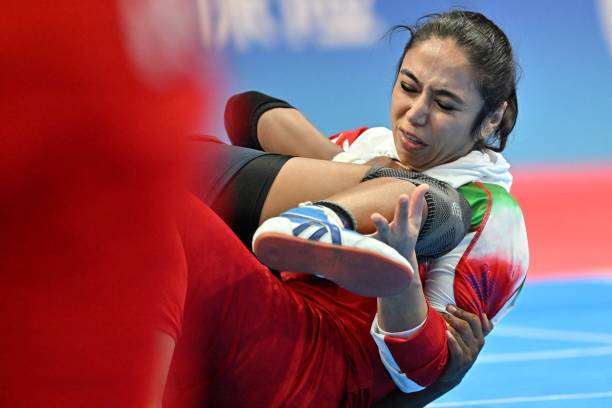
Introduction
Over the last two decades, Indian sports leagues have transformed the landscape of sports in the country, offering players more opportunities, increasing global viewership, and significantly enhancing the commercialization of various sports. While cricket has long been the dominant sport in India, leagues in football, kabaddi, badminton, and other disciplines have rapidly gained popularity, attracting world-class talent and investment.
This article explores how Indian sports leagues are revolutionizing the game, their impact on athletes and the economy, and the challenges they face moving forward.
The Rise of Indian Sports Leagues
The introduction of franchise-based leagues in India has been a game-changer. Inspired by the success of international leagues such as the English Premier League (EPL) and the National Basketball Association (NBA), India adopted a similar model to promote various sports. The Indian Premier League (IPL), launched in 2008, set the foundation for this revolution, and its success led to the creation of multiple other leagues.
Some of the most prominent Indian sports leagues include:
- Indian Premier League (IPL) – Cricket
- Indian Super League (ISL) – Football
- Pro Kabaddi League (PKL) – Kabaddi
- Premier Badminton League (PBL) – Badminton
- Hockey India League (HIL) – Hockey
- Ultimate Table Tennis (UTT) – Table Tennis
Each of these leagues has contributed to increasing the visibility of their respective sports while providing lucrative opportunities for players and stakeholders.

How Indian Sports Leagues Are Transforming the Game
1. Financial Growth and Commercialization
ISL have generated billions of dollars in revenue through sponsorships, media rights, and merchandising. The IPL, for instance, has become one of the wealthiest sporting leagues in the world, with massive broadcasting deals and corporate sponsorships fueling its growth. The involvement of major brands and corporate investors has helped improve infrastructure and player salaries.
2. Increased Global Reach and Viewership
With the advent of digital streaming and social media, ISL are now being watched by audiences worldwide. The IPL, for example, has attracted viewership from across the globe, including countries with strong cricketing traditions like Australia and England. Similarly, the ISL has helped Indian football reach a global audience, with international players and coaches participating in the league.

3. Development of Homegrown Talent
One of the most significant impacts of ISL is the platform they provide for young and emerging talent. Before these leagues, opportunities for Indian athletes to showcase their skills on a large stage were limited. Now, players from small towns and rural areas are getting a chance to compete alongside international stars.
For example:
- The IPL has produced world-class cricketers like Jasprit Bumrah and Hardik Pandya.
- The ISL has nurtured footballers such as Sahal Abdul Samad and Liston Colaco.
- The PKL has made kabaddi stars like Pardeep Narwal and Rahul Chaudhari household names.
4. Enhanced Infrastructure and Training Facilities
The rise of Indian sports leagues has led to improved infrastructure, including world-class stadiums, training academies, and better coaching facilities. Many leagues have mandated minimum requirements for player training, fitness, and rehabilitation, which has helped improve the overall standard of Indian sports.
5. Boost to Grassroots Development
Many sports leagues in India are investing in grassroots programs to identify and develop young talent. For instance, the ISL has youth development initiatives that focus on scouting and training young footballers, ensuring a steady pipeline of players for the national team. Similarly, kabaddi leagues have introduced training camps and scholarships for aspiring athletes.
6. Expanding Career Opportunities in Sports
Traditionally, career options in Indian sports were limited to playing or coaching. However, the rise of leagues has created a booming industry with jobs in sports management, commentary, marketing, physiotherapy, and analytics. This has encouraged more youth to consider sports as a viable career path beyond just playing professionally.
Challenges Facing Indian Sports Leagues
Despite their success, Indian sports leagues face several challenges that must be addressed for sustained growth:
1. Dependence on Sponsors and Media Rights
Most Indian sports leagues are heavily dependent on sponsorship and broadcasting deals. A downturn in the economy or lack of corporate interest could impact their financial stability.
2. Competition from International Leagues
Many Indian fans continue to follow international leagues like the EPL, NBA, and UEFA Champions League. Indian leagues must focus on improving the quality of competition to retain viewership and fan loyalty.
SUGGESTED FOR YOU
The Best Indian Football Clubs of the Last 20 Years: A Journey Through Excellence
7 Legendary Cricket Stadiums in India That Every Fan Must Know
3. Infrastructure Gaps
While there has been progress, India still lacks the widespread sports infrastructure seen in developed countries. Training facilities, stadium maintenance, and grassroots development require further investment.

4. Balancing Franchise and National Team Interests
With leagues running for extended periods, managing player workload between franchises and national teams has become a challenge. There is an ongoing debate about the impact of franchise-based cricket on international cricket schedules.
The Future of Indian Sports Leagues
The future of Indian sports leagues looks promising as they continue to attract investment, improve facilities, and nurture talent. Key areas that will drive growth include:
- Integration of Technology: The use of AI, data analytics, and wearable tech to enhance player performance and fan engagement.
- Expansion into New Sports: Emerging sports like mixed martial arts (MMA) and esports may see league formats develop in India.
- Global Collaborations: Partnering with international leagues and clubs to exchange knowledge and best practices.
- Increased Women’s Participation: The rise of women’s leagues, such as the Women’s Premier League (WPL) in cricket, signals a shift toward gender inclusivity in Indian sports.
CHECK OUT TOP 3 FREE BETTING PREDICTION SITES
Accuratepredict.com Soccerpredictions.net Betloy.com
Conclusion
ISL have had a profound impact on the sporting culture of the country, revolutionizing the way sports are played, watched, and commercialized. From boosting grassroots development to creating lucrative career opportunities, these leagues have set the stage for India’s rise as a sporting powerhouse.
While challenges remain, the continuous evolution of these leagues, coupled with advancements in infrastructure and technology, ensures that the future of Indian sports is brighter than ever. Whether it’s cricket, football, kabaddi, or badminton, India’s franchise-based leagues are here to stay, reshaping the sports landscape for generations to come.









